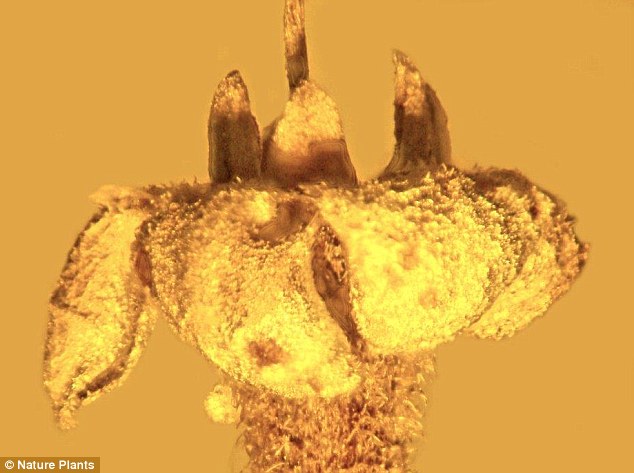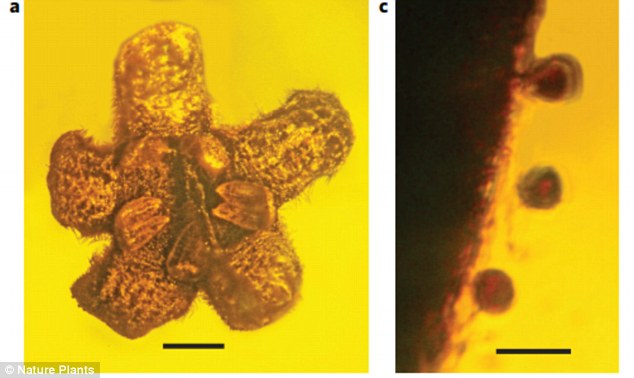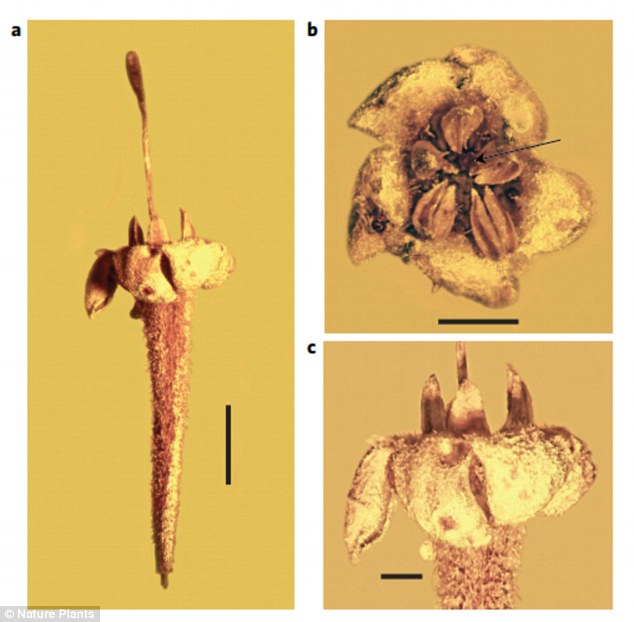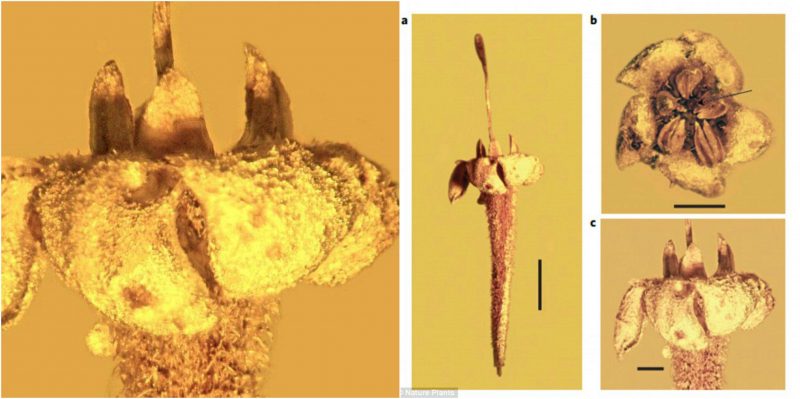More than three decades after it was initially discovered, an ancient flower preserved in amber has now been identified as a member of an entirely different species. Millions of years old flower concealed a lethal weapon when it bloomed in its prime; one of the most deadly poison found in nature.
In 1980, a group of researchers made the astounding discovery of this rare flower in the Dominican Republic. Fossils of the flowers were found in an amber mine, but this finding was one of the many discoveries that the team had made around that time; hence less attention was paid to correctly categorize the fossils.

The real identity of the fossil came to, light after they were handed over to a reputable botany professor of Rutgers University, Lena Struwe. She was given the data along with the High Definition photographs of the fossils by entomologist George Poinar of Oregon State University, who made the original discovery in 1986.
Professor Struwe undertook the project of painstakingly comparing the fossils against more than 200 various samples of the plant genus Strychnos. Professor Struwe had to compare every little detail of the fossils against every plant in some of the biggest collections of plants in the world. After evaluating the results Professor Struwe concluded that fossils discovered in the Dominican Republic must be a whole new species in the plant kingdom, she named the species Strychnos electri.
Another startling discovery that Professor Struwe put forward was regarding the makeup of the Strychnos electri. Struwe argued that all the indicators suggest that the close resemblance of the new species to today’s poisonous plants increases the likelihood that Strychnos electri must have been a poisonous plant some 20 to 45 million years ago. However, not much can be said about the entire chemical structure of the fossils since it is very rare that fossils of complete flower’s of this genus can be found anywhere in the world.

Commenting on the discovery, Professor Struwe expressed profound concern about the unavailability of enough taxonomic experts in botany around the world. She added that there are treasures of undiscovered fossils hiding in natural history collections worldwide, however not enough experts are taking the course of research in this field.

The poison that Strychnos electri is suspected to have contained when it bloomed millions of years ago is known as Strychnine. Classed as one of the strongest poisons known to man, Strychnine is mainly a bitter, white powder. Found abundantly in the plant Strychnos nux-vomica in countries like India, Sri Lanka, and the East Indies, consumption of a very small amount of Strychnine could possibly result in adverse health problems leading up to death.
